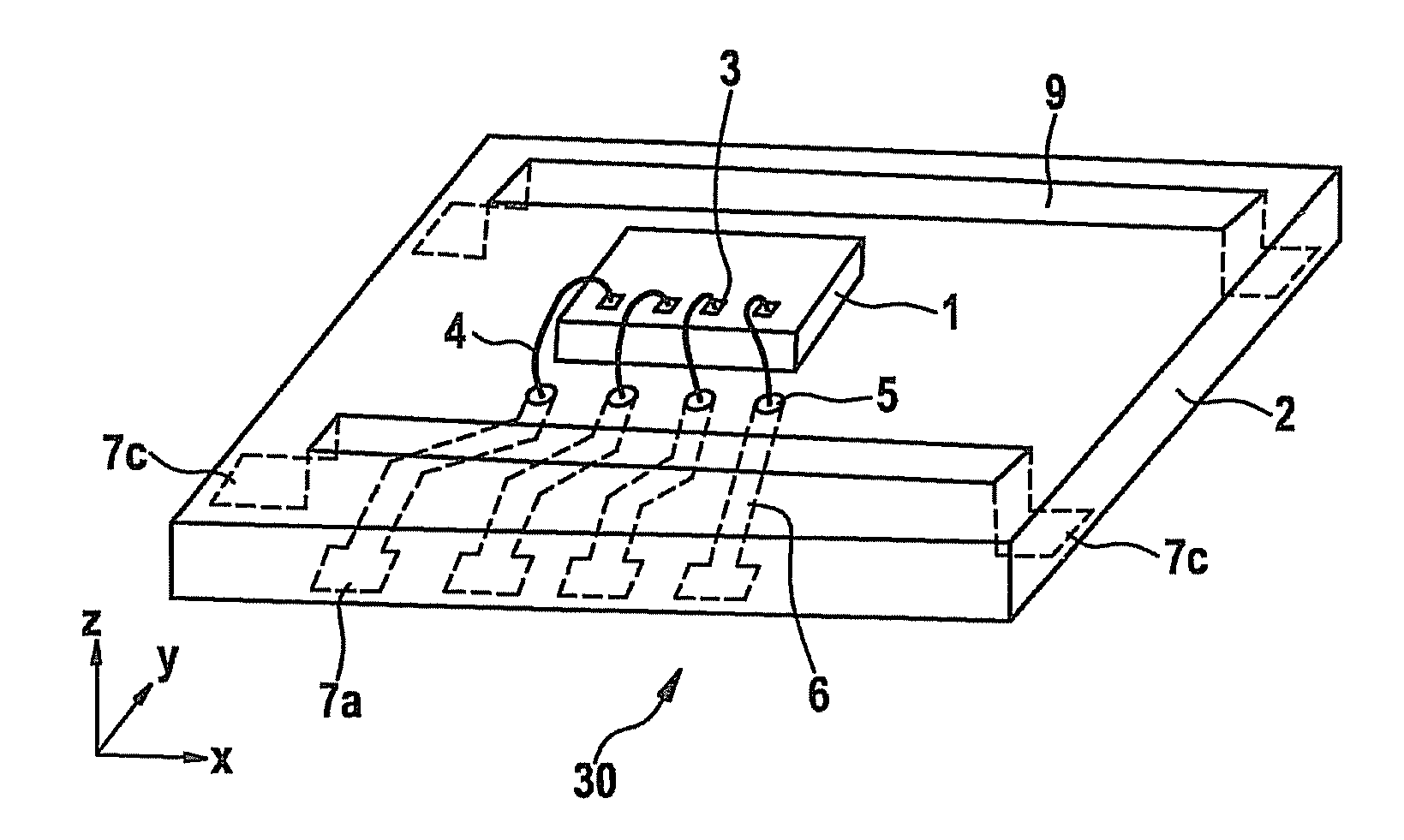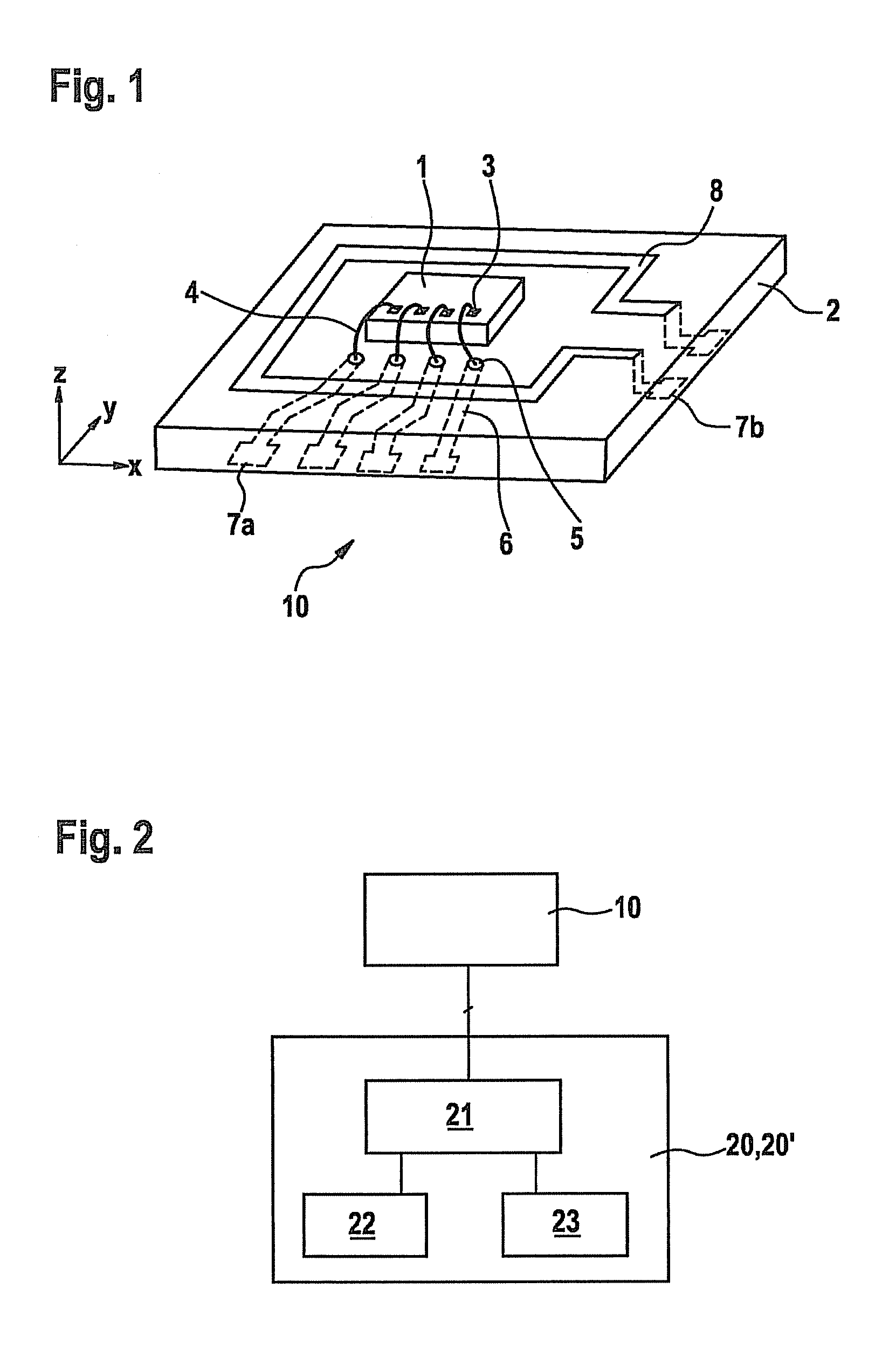Magnetic field sensor
a magnetic field and sensor technology, applied in the field of magnetic field sensors, can solve the problems of low integration complexity and consequently low cost, and achieve the effect of reducing the complexity of integration and ensuring the accuracy of measuremen
- Summary
- Abstract
- Description
- Claims
- Application Information
AI Technical Summary
Benefits of technology
Problems solved by technology
Method used
Image
Examples
Embodiment Construction
[0020]FIG. 1 shows a perspective view of a magnetic field sensor 10 according to a first exemplary embodiment of the present invention. Magnetic field sensor 10 includes a sensor element 1 mounted on, e.g., glued to, a printed circuit board 2.
[0021]Sensor element 1 is designed as a microsystem, i.e., the sensor structure for generating a sensor signal corresponding to the size of the magnetic field to be measured is provided monolithically on a semiconductor chip made of silicon, for example. Sensor element 1 in this exemplary embodiment is designed as a Hall sensor and generates an analog signal corresponding to the z component of the magnetic field at the sensor location. This analog signal is low-pass filtered and converted to a digital sensor signal by an analog-digital converter. In the present example, this further processing of the analog signal is implemented by a data processing unit integrated into sensor element 1. However, it is also possible to provide a separate module...
PUM
 Login to View More
Login to View More Abstract
Description
Claims
Application Information
 Login to View More
Login to View More - R&D
- Intellectual Property
- Life Sciences
- Materials
- Tech Scout
- Unparalleled Data Quality
- Higher Quality Content
- 60% Fewer Hallucinations
Browse by: Latest US Patents, China's latest patents, Technical Efficacy Thesaurus, Application Domain, Technology Topic, Popular Technical Reports.
© 2025 PatSnap. All rights reserved.Legal|Privacy policy|Modern Slavery Act Transparency Statement|Sitemap|About US| Contact US: help@patsnap.com



